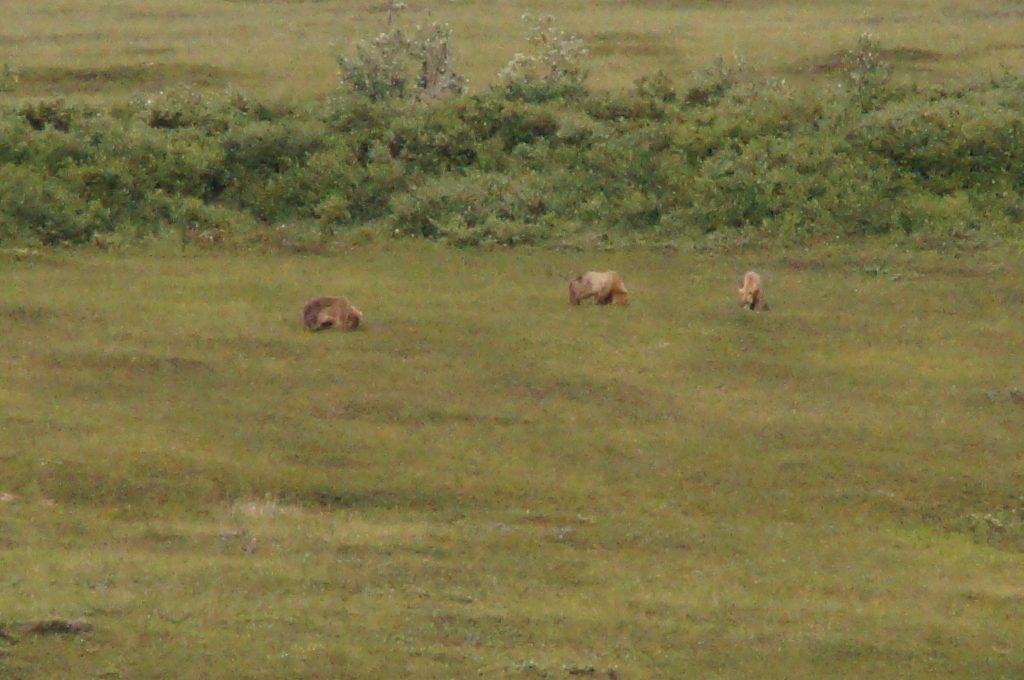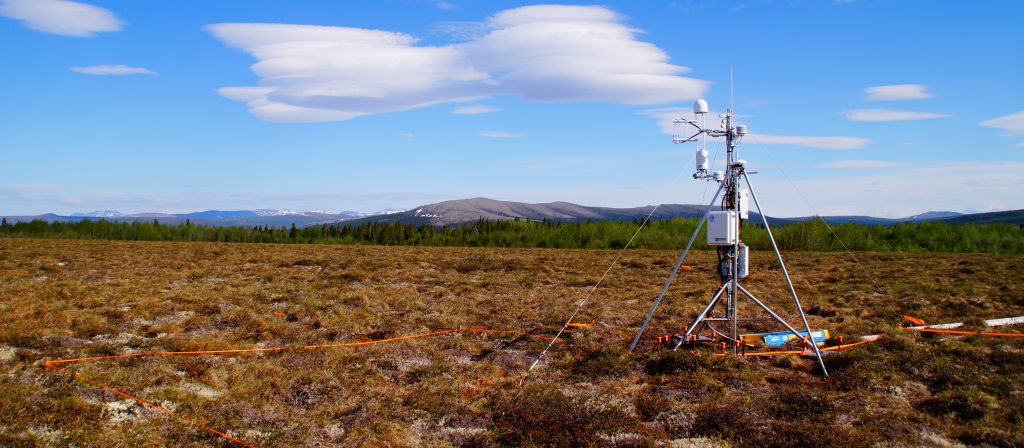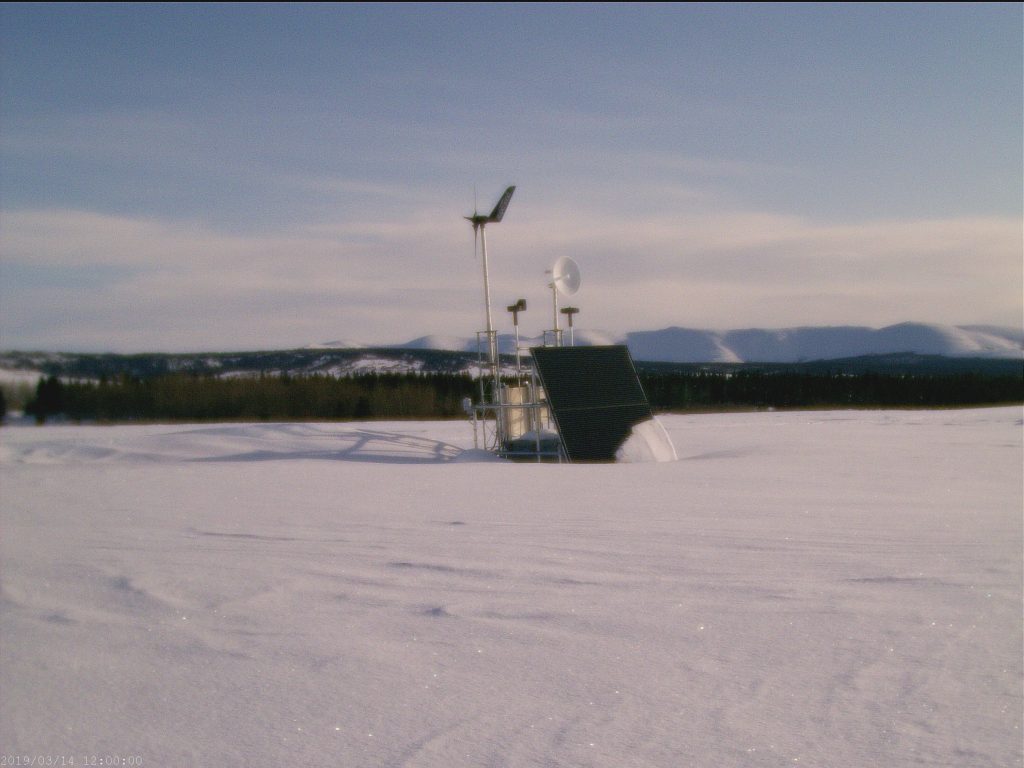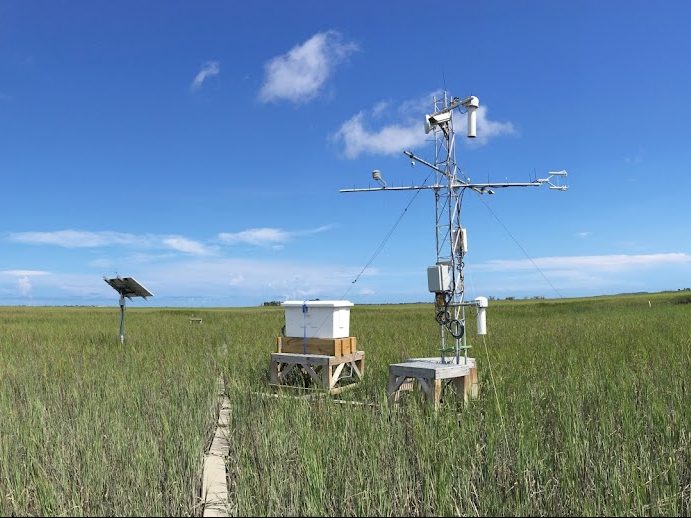
Drunken trees, Cladina stallaris “cauliflowers”, and grizzly bears frame methane fluxes at the Next Generation Ecosystem Experiment US-NGC site (NGEE Arctic Council, Council, Alaska) PC: Sigrid Dengel
Tucked away on the remote Seward Peninsula in the far west of Alaska lays the Arctic outpost for the Department of Energy’s Next Generation Ecosystem Experiment (NGEE-Arctic) and its associated AmeriFlux site (US-NGC). During the summer months each year, when US-NGC is accessible by road, blueberries fruit across the surrounding tundra and river valleys, attracting grizzly bears. When the tundra dries out, the Cladina stallaris lichens show off their pretty cauliflower heads and give the appearance of a landscape dotted with snow patches. A closer look at this landscape provides signs of environmental change: partially toppled trees betray the thawing permafrost underfoot, while collapsing thermokarst features criss-cross the area.
The US-NGC site is powered by solar and wind power, making year-round measurements possible. Maintaining the site year-round does, however, present some challenges, especially due to the inaccessibility of the site during the winter. Heavy winter snowfall can block Skookum Pass, and make the site inaccessible by car from October up to end of May. Last year (2017-2018) was one example of an exceptional winter, with 60 feet of snow blocking the road in places and making a helicopter ride near-impossible by preventing landing and refuelling. After extreme snowfall, the only access option is to make a gruelling 76-mile snow machine ride along the coast, taking several hours – so far this has not been necessary.
Though just below the Arctic Circle, the site also experiences warm, wet, and windy summers. Changing wind patterns shift the tower footprint between drier and moister landforms, which is reflected in the CH4 and CO2 fluxes. Summer temperatures can soar to near 30 ºC, when the wet tussock tundra can emit CH4 at rates of up to 60 nmol m-2 s-1 while CO2 fluxes show net uptake of around 5 µmol m-2 s-1. Although CH4 fluxes were similar in 2017 and 2018, GPP and respiration showed much higher variability across the two years.
The current (2018-2019) winter appeared to be a short one, with temperatures reaching a cozy 0 ºC by February, which is typically the coldest month of the year, however temperatures have since plunged back to -20 ºC during March. At other Alaska sites, late-winter temperatures make a big difference for tundra gas exchange. Early spring onset can lead to cycles of thawing and refreezing, associated with increased CH4 emissions during the spring shoulder season as observed near Utqiaġvik (formerly Barrow) at the second NGEE Arctic/AmeriFlux site (US-NGB; Raz‐Yaseef et al. 2017) and by Zona et al. (2016) Although this year’s is a milder winter, 70 cm snow still covers the tundra so it might be a while yet till spring thaw.
– Dr. Sigrid Dengel (Lawrence Berkeley National Lab.) authored this post for the AmeriFlux Year of Methane.
Raz‐Yaseef, N., Torn, M. S., Wu, Y., Billesbach, D. P., Liljedahl, A. K., Kneafsey, T. J., Romanovsky, V.E., Cook, D. R., & Wullschleger, S. D. (2017). Large CO2 and CH4 emissions from polygonal tundra during spring thaw in northern Alaska. Geophysical Research Letters, 44(1), 504-513.
Zona, D., Gioli, B., Commane, R., Lindaas, J., Wofsy, S.C., Miller, C.E., Dinardo, S.J., Dengel, S., Sweeney, C., Karion, A. and Chang, R.Y.W., (2016). Cold season emissions dominate the Arctic tundra methane budget. Proceedings of the National Academy of Sciences, 113(1), pp.40-45.







No Comments
Be the first to start a conversation